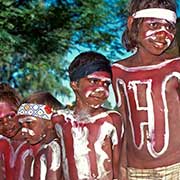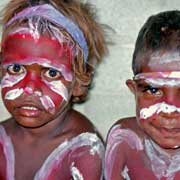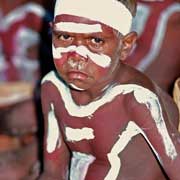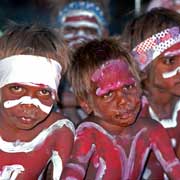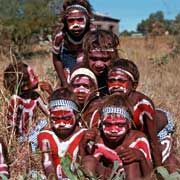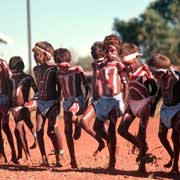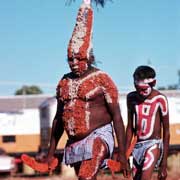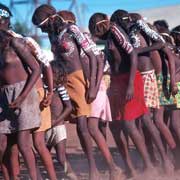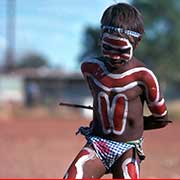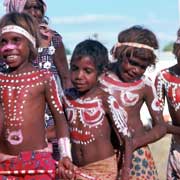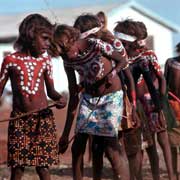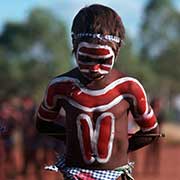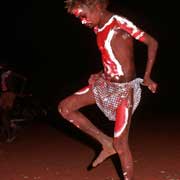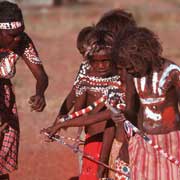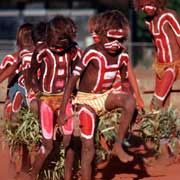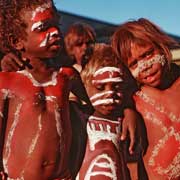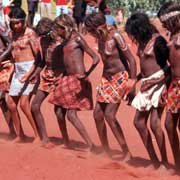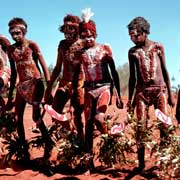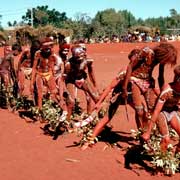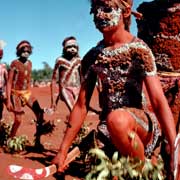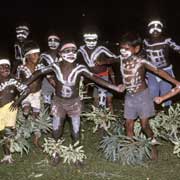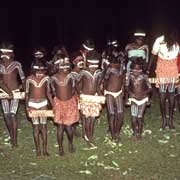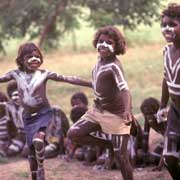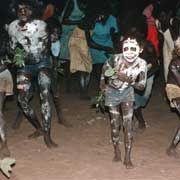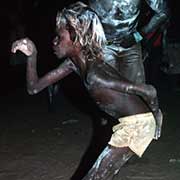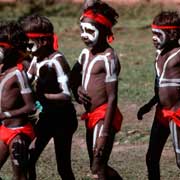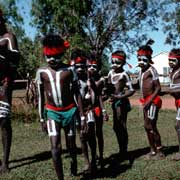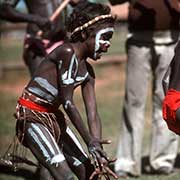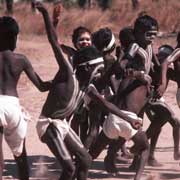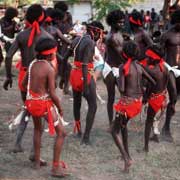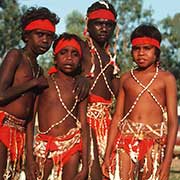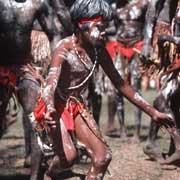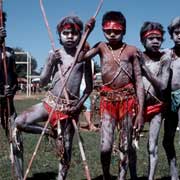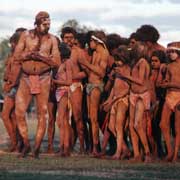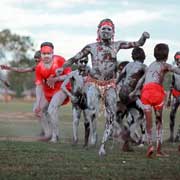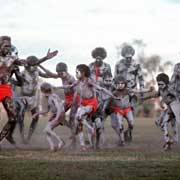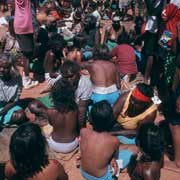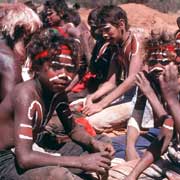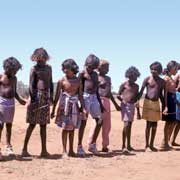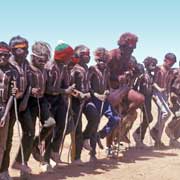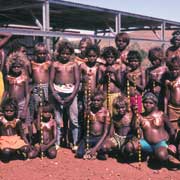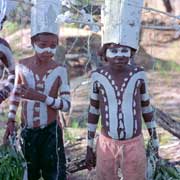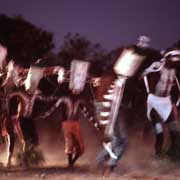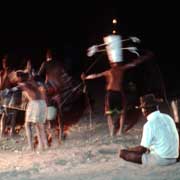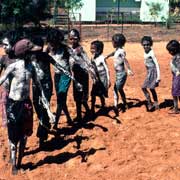Photos of Aboriginal Children's Dance in the Northern Territory, Australia
Aboriginal Children's Dance in the Northern Territory
Aboriginal culture is alive and traditional chants and dancing are very important among the many different peoples of northern Australia. Children are always encouraged to participate and good dancers are loudly encouraged; although the dances always have a deeper meaning behind them, the biggest impression the kids leave on the onlooker is a sense of enormous fun. The older people are always there to guide the young ones by example and take great pride in the performance by the new generation. It is at these occasions that the whole community comes together.
you may then send it as a postcard if you wish.
Each group has its own style of body decoration and dancing. The "bungkul" dances of the Top End, accompanied by the sound of the "didjeridu" drone-pipe and clapsticks, where the young dancers whirl and stamp wildly, are completely different from the more orderly looking "purlapa" dances of Central Australia, with dancers decorated with ochres and glued-on vegetable down, accompanied by the sound of boomerangs, clapped together.
Here then are kids from the Top End to Central Australia, from the Tanami desert to the Gulf of Carpentaria; but in spite of the differences in body painting, chants, and steps they all share the same energy and joy, a celebration of the endurance of what may be the oldest culture on earth.



